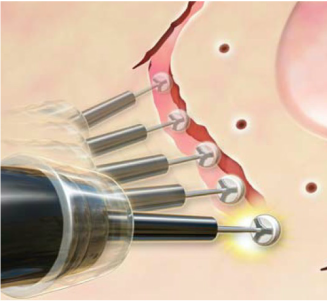
Endoscopic submucosal dissection (ESD) is a technique pioneered in Japan in the early 1990s for the resection of early gastric cancers. Since then, its use has expanded to pharyngeal, esophageal and colorectal lesions. Currently in North America, the technique for removing large superficial lesions in the GI tract is primarily limited to endoscopic mucosal resection (EMR). The main drawbacks of EMR is that these lesions are removed in multiple pieces which can limit the accuracy of pathological assessment and increase risk of recurrence. Contrary to EMR, the performance of an ESD allows for an en bloc (one complete piece) resection. This facilitates pathological assessment and has the lowest risk of recurrence.
Unfortunately, the main deterrent in the performance of ESD in Canada is its technical complexity and lack of clinical experience and standardized training domestically.
Unfortunately, the main deterrent in the performance of ESD in Canada is its technical complexity and lack of clinical experience and standardized training domestically.
Performance of ESD for a Barretts M2 adenocarcinoma (for healthcare providers) can be viewed on Dr. Bechara's YouTube channel below